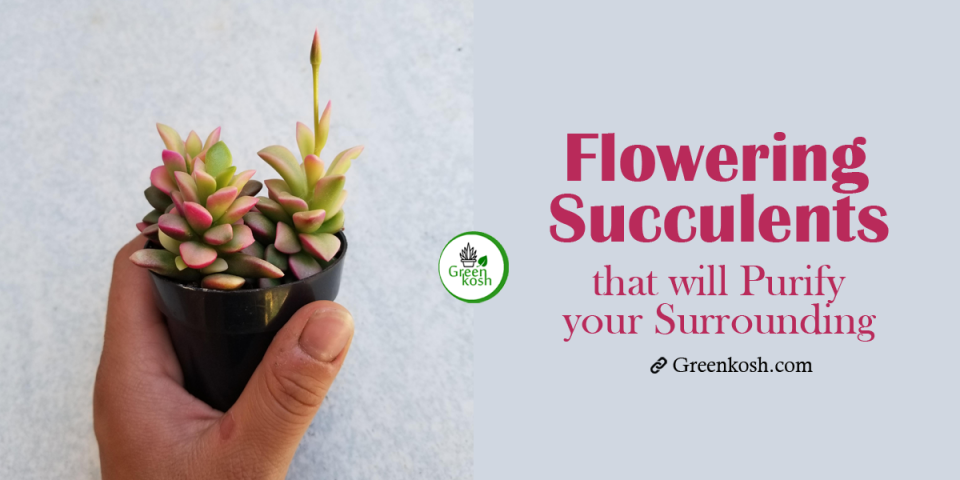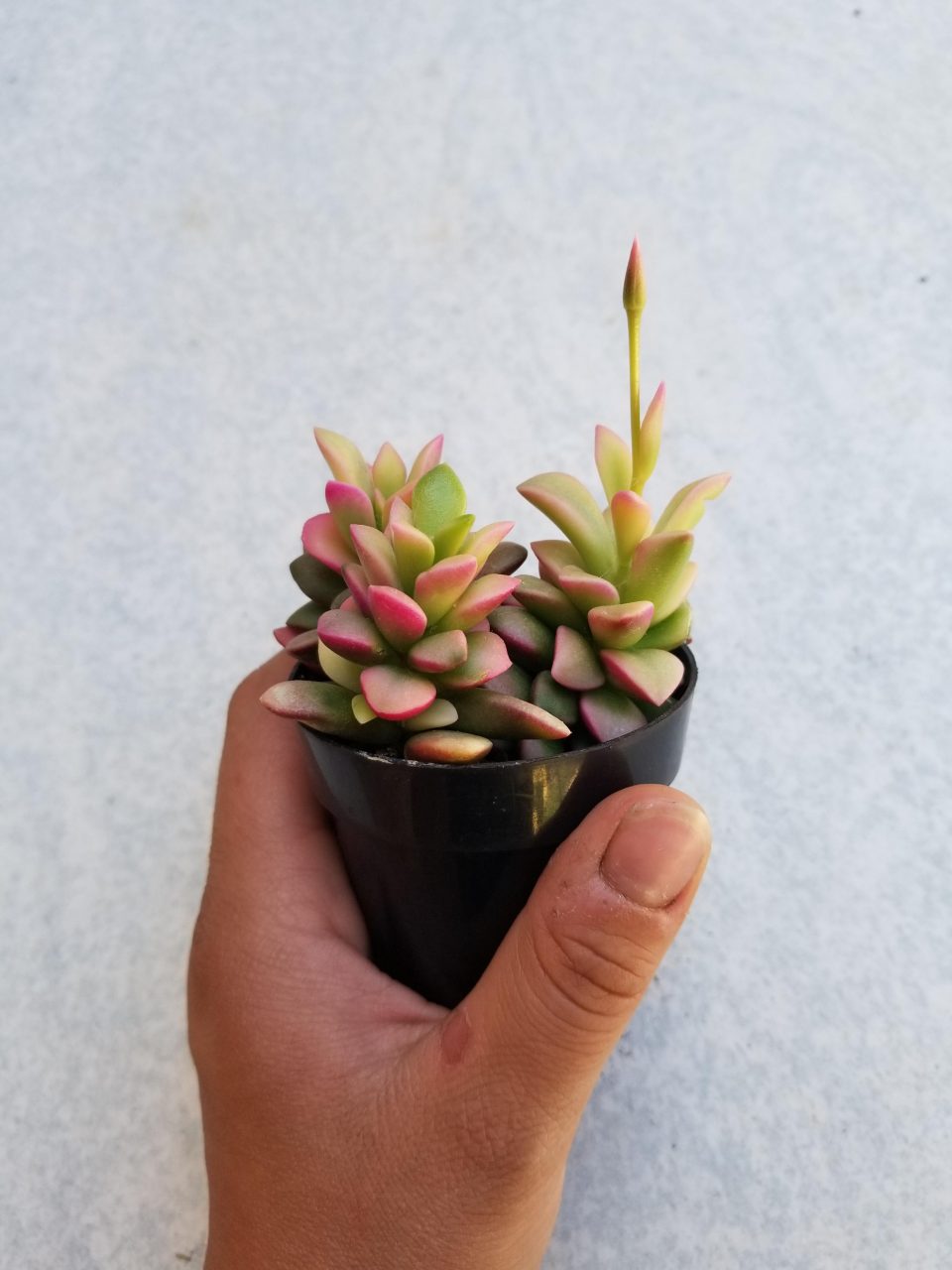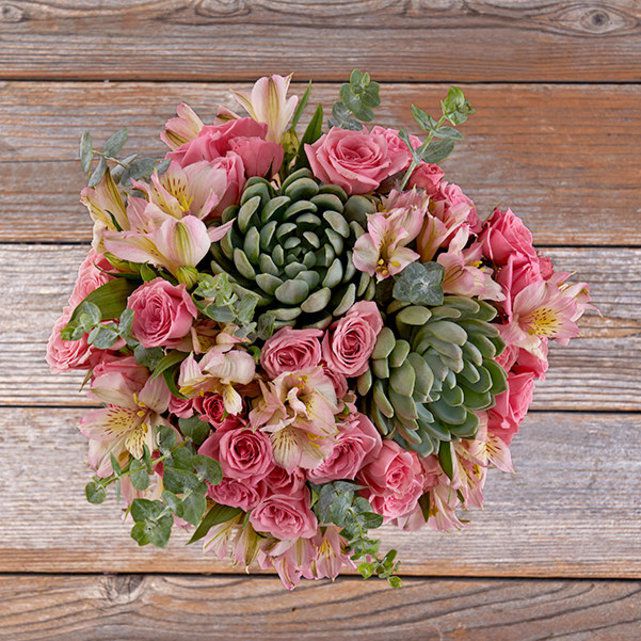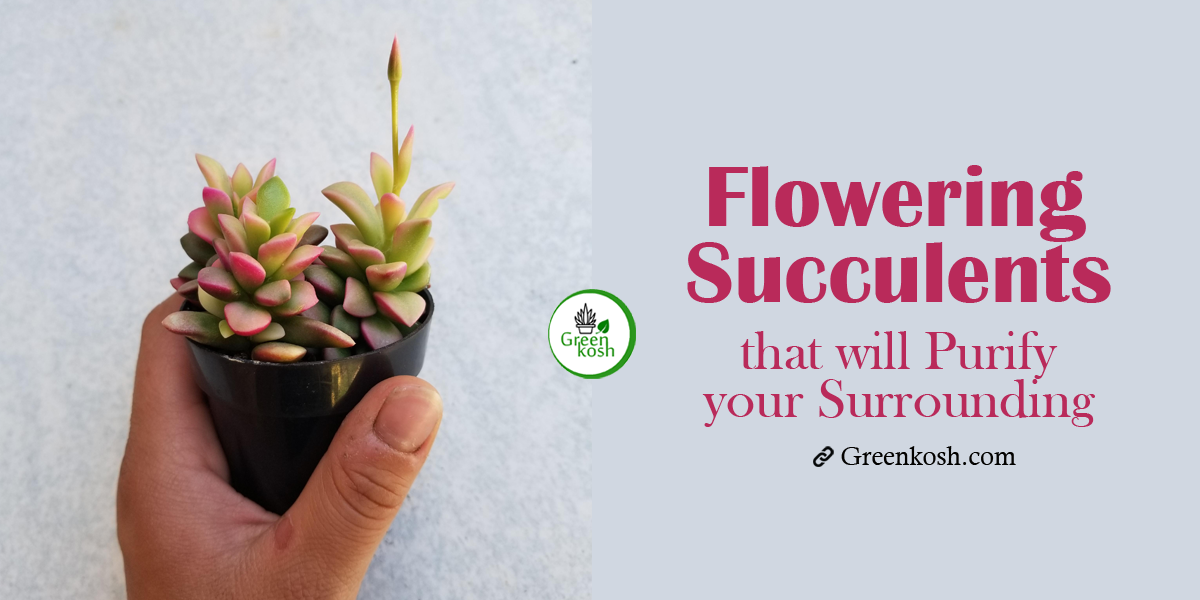
Although, flowering succulents plants identification is not an easy task. Succulent plants are those plants with parts that are thickened, muscular and engorged, generally to hold water in completely dry environments or soil conditions.
Each and every succulent plant and desert verdure have the ability to bloom at some point or another, anyway zone and conditions must be great.
There are different flowering succulents types plants that can be beneficial in many ways like:
- Purify air
- Increase oxygen
- Increase human focus
- Increase humidity
- Enhance beauty
The plant fails horrendously after its done blooming which is the explanation it is in like manner called the grow of death.

Some monocarpic succulents are Sempervivums (Hens and Chicks), most Aeoniums and most Agave plants. One way to deal with tell if the plant is monocarpic is by the way wherein the plant blooms.
In case the bloom diverts out from the point of convergence of the plant and the whole plant seems to change into a growing stalk, it generally is monocarpic. For the most part, they grow when in doubt starts from the sides of the plant.
There genuinely is nothing you can do once you see a monocarpic plant sprouting. You can’t stop the strategy so you ought to welcome it. While it may sound horrifying, monocarpic plants don’t pass on vain.
Also, read: Succulent Caring Tips Which will You Pro Gardener
Most monocarpic succulents are remarkable producers, which imply they would have made a lot of little folks or youngster plants before they blossom and fail horrendously. The young doggies and newborn child plants will continue living, only the mother plant passes on in the wake of blooming.
There could be both indoor flowering succulents and outdoor flowering succulents. Succulents are not just a well-known scene and compartment plants with fascinating structures and leaf shapes, however, they additionally regularly produce astounding, uncommon blooms with splendid hues.
Types of Flowering Succulents Plants – By Colors

- Purple flowering succulents
- Pink flowering succulents
- Yellow flowering succulents
- White flowering succulents
- Blue flowering succulents
- Red flowering succulents
- Green flowering succulents
Flowering Succulent plants have been the subject of interest for a considerable length of time, yet their pertinence as experts of water the board has maybe never been more prominent than now, with quickening worldwide change and weight on characteristic and farming frameworks earnestly requesting bits of knowledge into the systems of dry spell obstruction.
Succulent Plants are truly versatile houseplants and will flourish in the scope of indoor conditions. Succulents can be the most multifaceted house plants out there.
They are accessible in an assortment of hues, styles, shapes, and sizes, immaculate to coordinate any houseplant darling’s needs and needs.
For most plant proprietors, over-watering and related contaminations are the fundamental driver of death in succulent flowering plants.
Type of Flowering Succulents Plants – By Species
- Aloe Vera: It is a succulent plant type of the family Aloe. The species is additionally utilized for enlivening purposes and develops effectively inside as a pruned plant.
- Echeveria ‘Fabiola’: It is an appealing succulent plant that structures little, minimized green leaves tipped in red.
- Red Yucca: Hesperaloe Parviflora, otherwise called red yucca, Hummingbird Yucca, red-blossom bogus yucca and Samandoque, is a plant that has nature of warmth obstruction, low upkeep needs, hummingbird pulling in blooms.
- Hedgehog Cactus: Hedgehog prickly plant (Echinocereus engelmannii) is a low-developing succulent local toward the southwestern United States.
- Stonecrop: Sedum is a huge sort of blooming plants in the family Crassulaceae, individuals from which are usually known as stonecrops. They are leaf succulents found principally in the Northern Hemisphere.
- Christmas Cactus: In the Northern Hemisphere, they are called Christmas prickly plant, Thanksgiving desert plant, crab prickly plant, and occasion desert flora. This plant has a place with a group of succulent plants.
- Agave: It is basically known for its succulent and xerophytic species that regularly structure enormous rosettes of solid, beefy leaves. Plants in this variety might be viewed as perpetual, on the grounds that they require a few to numerous years to develop and blossom.
- Crown of Thorns: It is a succulent subshrub or bushes developing to 1.8 m (5 ft 11 in) tall, with thickly spiked stems. In antiquated occasions and legend partners it with the crown of thistles worn by Christ.
- Prickly Pear Cactus: Opuntia, usually called thorny pear, is a variety in the prickly plant family, Cactaceae. It likewise goes under the classification of succulent plants.
Most flowering succulents plants are either summer-or winter-lethargic, subsequently make string and fall the ideal time for a touch of repotting.
By and large, you ought to re-pot your flowering succulent plants at regular intervals to ensure the dirt is crisp and prolific and there is sufficient space for the plant to develop. Timing is likewise a significant factor you should think about.
FAQs
Do succulents die after flowering?
Most succulent plants don’t kick the pail in the wake of sprouting, yet some do. The plant fails horrendously after its done blooming which is the explanation it is in like manner called the growth of death
Are succulents’ flowers?
Blossoms are a magnificent reward, yet regularly succulents are bashful to sprout, particularly in the event that they are indoor holder plants.
Should I re-pot my succulents when there flowering?
The appropriate response is no. Lethargy is the period when the plant is alive however isn’t effectively developing. Gambling repotting them may disturb their developing cycle and could do some mischief to your succulents.

